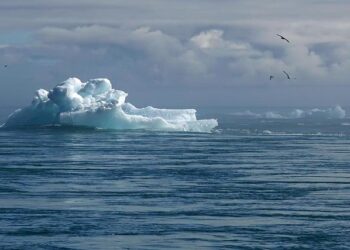As the Arctic experiences some of the fastest climate shifts on the planet, communities on the frontlines are grappling not only with environmental changes but also with complex political challenges. In Nunatsiavut, a self-governing Inuit region in northern Canada, these challenges highlight the intricate interplay between climate adaptation and power dynamics. A new article published in Nature sheds light on the political ecology of climate change adaptation in this fragile landscape, revealing how governance, Indigenous knowledge, and environmental pressures converge to shape resilience strategies. This revealing study offers critical insights into the broader Arctic crisis and underscores the importance of inclusive, context-sensitive approaches to climate policy.
The Role of Indigenous Governance in Shaping Arctic Climate Adaptation
Indigenous governance structures in Nunatsiavut play a pivotal role in steering climate adaptation strategies that are deeply rooted in local knowledge and cultural values. Unlike conventional top-down approaches, these governance frameworks emphasize community-led decision-making, ensuring that adaptation measures address both environmental changes and social resilience. The Inuit’s holistic understanding of their surroundings enables them to anticipate shifting ice patterns, altered wildlife migration, and new environmental hazards, thereby crafting adaptive responses that are both sustainable and culturally coherent.
Key components shaping these governance-driven adaptations include:
- Integration of Traditional Knowledge: Utilizing oral histories and observational data passed through generations to predict climate trends.
- Community Empowerment: Strengthening local leadership roles to spearhead adaptation projects and policy dialogues.
- Collaborative Governance: Fostering partnerships between Inuit organizations and federal agencies to co-manage resources and crisis responses.
| Governance Aspect | Adaptation Impact |
|---|---|
| Traditional Knowledge Inclusion | Enhanced early warning systems |
| Community-Led Monitoring | Improved wildlife management |
| Interagency Collaboration | Broader policy support |
Community-Led Strategies Addressing Environmental and Social Challenges
In Nunatsiavut, local communities are spearheading adaptive measures deeply rooted in Indigenous knowledge and collective governance, emphasizing the interconnectedness of environmental integrity and social well-being. These strategies prioritize the preservation of traditional hunting grounds, the restoration of biodiversity, and the reinforcement of community networks to foster resilience against climate change. By actively involving elders, youth, and local leaders, Nunatsiavut exemplifies how place-based expertise can shape responsive policies that address both ecological shifts and societal vulnerabilities.
- Community stewardship programs that monitor and manage wildlife affected by melting ice and shifting seasons.
- Cultural education initiatives designed to maintain Indigenous languages and practices linked to environmental stewardship.
- Collaborative governance frameworks facilitating shared decision-making between Inuit governments and external agencies.
Moreover, the socio-political landscape of climate adaptation in Nunatsiavut reveals tensions between external regulations and Indigenous sovereignty. Communities often navigate complex policy environments where traditional knowledge is undervalued. However, a growing recognition of Indigenous-led approaches is fostering innovative partnerships and adaptive frameworks. These dynamics underscore the necessity of centering local voices to ensure equitable climate resilience outcomes.
| Strategy | Focus Area | Impact |
|---|---|---|
| Ice-dependent Species Monitoring | Wildlife Conservation | Improved population data for sustainable hunting |
| Language Revitalization Workshops | Cultural Preservation | Enhanced intergenerational knowledge transfer |
| Co-management Agreements | Governance | Increased community authority over land use |
Policy Recommendations for Strengthening Climate Resilience in Nunatsiavut
To effectively bolster climate resilience in Nunatsiavut, policy frameworks must embrace the intersection of traditional Indigenous knowledge and contemporary scientific approaches. Empowering local communities through co-management strategies ensures that adaptation efforts are culturally relevant and environmentally sustainable. Key recommendations emphasize the integration of early-warning systems for extreme weather, the expansion of community-led ecological monitoring programs, and increased funding for sustainable infrastructure projects that address permafrost thaw and coastal erosion.
Moreover, fostering collaborative governance between Inuit representatives, regional authorities, and federal agencies can streamline resource allocation and bolster adaptive capacity. Prioritizing education and capacity-building initiatives tailored to youth and Elders alike promotes intergenerational knowledge transfer, a cornerstone of resilience in Nunatsiavut. The table below summarizes priority actions and their anticipated impacts:
| Priority Action | Focus Area | Anticipated Impact |
|---|---|---|
| Community-Led Monitoring | Environmental Observation | Enhanced early detection of climate threats |
| Infrastructure Upgrades | Built Environment | Reduced vulnerability to storm surges & thawing |
| Cultural Education Programs | Knowledge Transmission | Strengthened local capacity and resilience |
| Policy Integration | Governance & Partnerships | Streamlined collaborative adaptation strategies |
Final Thoughts
As climate change continues to reshape the Arctic landscape, the political ecology of adaptation in regions like Nunatsiavut offers critical insights into the complex interplay between environment, governance, and indigenous communities. This study highlights the urgent need for inclusive policies that respect local knowledge and prioritize equity in addressing the unique challenges faced by Arctic peoples. As the world watches the North’s transformations, Nunatsiavut’s experience underscores that effective climate adaptation hinges not only on scientific solutions but also on political will and cultural resilience.































